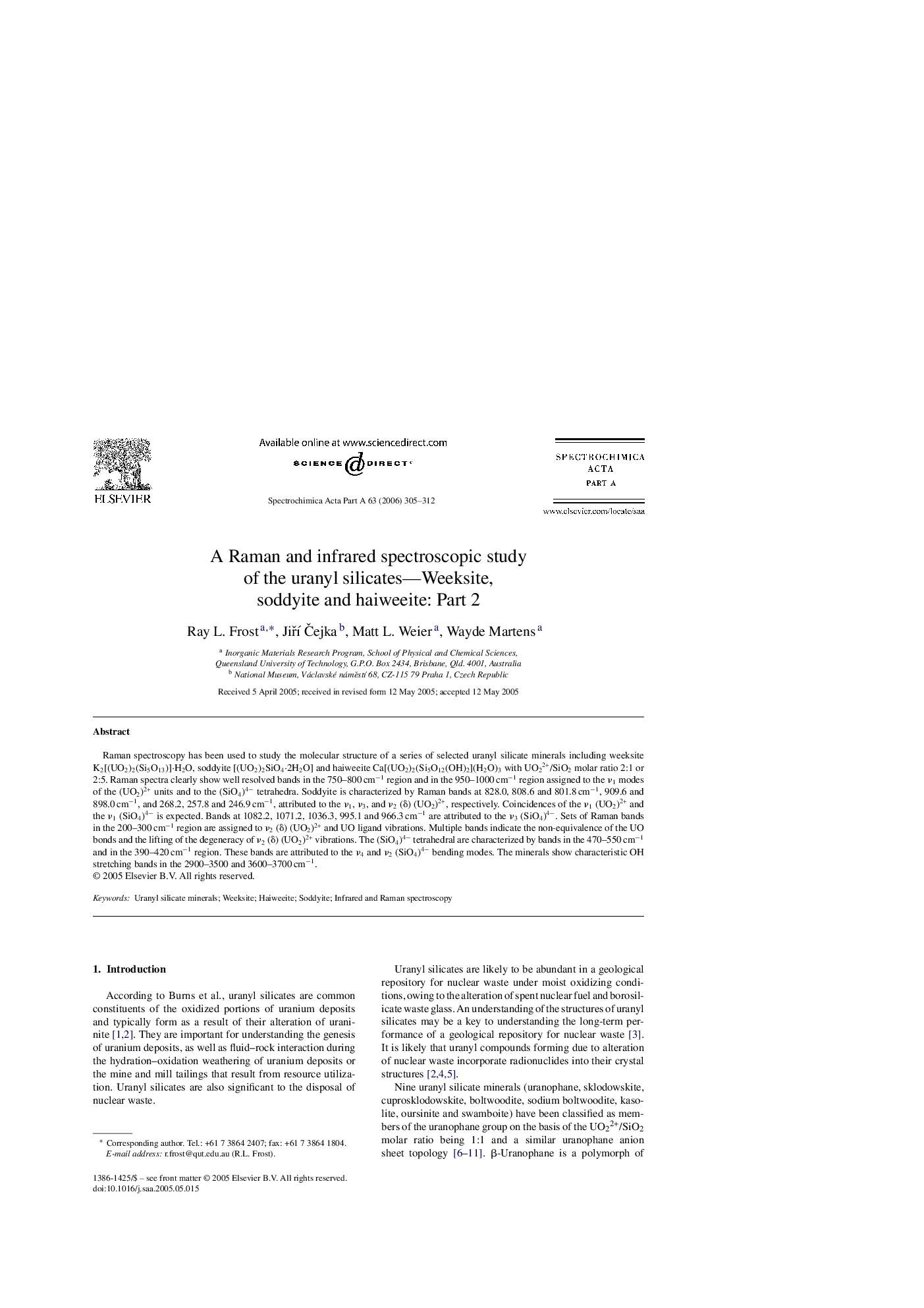| Article ID | Journal | Published Year | Pages | File Type |
|---|---|---|---|---|
| 1238785 | Spectrochimica Acta Part A: Molecular and Biomolecular Spectroscopy | 2006 | 8 Pages |
Abstract
Raman spectroscopy has been used to study the molecular structure of a series of selected uranyl silicate minerals including weeksite K2[(UO2)2(Si5O13)]·H2O, soddyite [(UO2)2SiO4·2H2O] and haiweeite Ca[(UO2)2(Si5O12(OH)2](H2O)3 with UO22+/SiO2 molar ratio 2:1 or 2:5. Raman spectra clearly show well resolved bands in the 750-800 cmâ1 region and in the 950-1000 cmâ1 region assigned to the ν1 modes of the (UO2)2+ units and to the (SiO4)4â tetrahedra. Soddyite is characterized by Raman bands at 828.0, 808.6 and 801.8 cmâ1, 909.6 and 898.0 cmâ1, and 268.2, 257.8 and 246.9 cmâ1, attributed to the ν1, ν3, and ν2 (δ) (UO2)2+, respectively. Coincidences of the ν1 (UO2)2+ and the ν1 (SiO4)4â is expected. Bands at 1082.2, 1071.2, 1036.3, 995.1 and 966.3 cmâ1 are attributed to the ν3 (SiO4)4â. Sets of Raman bands in the 200-300 cmâ1 region are assigned to ν2 (δ) (UO2)2+ and UO ligand vibrations. Multiple bands indicate the non-equivalence of the UO bonds and the lifting of the degeneracy of ν2 (δ) (UO2)2+ vibrations. The (SiO4)4â tetrahedral are characterized by bands in the 470-550 cmâ1 and in the 390-420 cmâ1 region. These bands are attributed to the ν4 and ν2 (SiO4)4â bending modes. The minerals show characteristic OH stretching bands in the 2900-3500 and 3600-3700 cmâ1.
Related Topics
Physical Sciences and Engineering
Chemistry
Analytical Chemistry
Authors
Ray L. Frost, JiÅÃ Äejka, Matt L. Weier, Wayde Martens,
